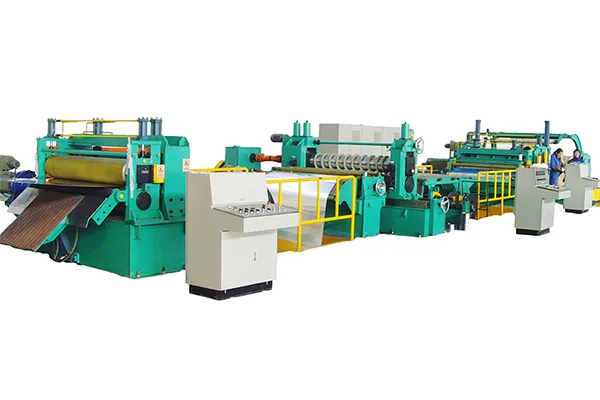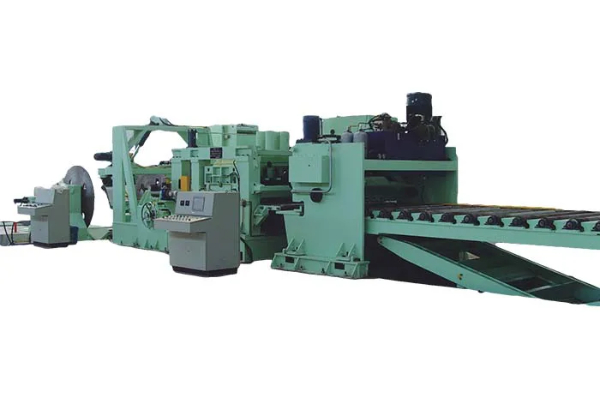
The Science Behind Duct Beading Accuracy
- By:Metmac
- 2024-07-04
- 248
In the realm of sheet metal fabrication, precision reigns supreme. Among the countless techniques employed to achieve flawless results, duct beading stands as a testament to the intricate alliance between science and craftsmanship.
The Art of Beading
Duct beading involves the formation of a raised edge, known as a bead, along the perimeter of sheet metal ductwork. This bead provides structural reinforcement and enhances the attachment of mating duct sections. However, achieving the desired bead geometry with consistent accuracy requires a keen understanding of the underlying mechanics.
The Science of Beading
The beading process relies on the principles of plastic deformation. When a beading machine applies pressure to the sheet metal, the material undergoes a transformation from its original shape without rupture. The bead is formed by a combination of compressive, tensile, and shear forces.
The material’s yield strength, thickness, and grain structure influence the beading accuracy. Thicker materials require higher forces to deform, while finer grain structures result in smoother beads. The machine’s configuration, including the beading roll diameter and forming angle, also plays a critical role.
Variables in Beading
A myriad of factors can affect beading accuracy, including the following:
Material properties (yield strength, thickness, grain structure)
Machine parameters (roll diameter, forming angle, feed rate)
Tool condition (sharpness, wear)
Environmental factors (temperature, humidity)
Optimizing Accuracy
To achieve optimal beading accuracy, manufacturers employ a combination of empirical knowledge and advanced modeling techniques. Computational analysis allows engineers to predict the material’s behavior under different beading conditions, optimizing process parameters for each specific application.
Benefits of Accurate Beading
Precise duct beading offers several advantages:
Enhanced structural integrity of ductwork
Secure and leak-proof connections
Improved air flow efficiency
Reduced installation time and costs
Conclusion
The science behind duct beading accuracy is a captivating blend of physics, materials science, and engineering. By understanding the mechanics of bead formation and the influence of various parameters, manufacturers can achieve the precision required for flawless sheet metal fabrications. This dedication to accuracy ensures the reliability, efficiency, and longevity of ductwork systems in diverse applications.
-
Finding the Right Partner: Your Guide to Premium Sheet Metal Laser Cutting Machines for Sale
2025/12/23 -
METMAC: Defining Excellence Among Sheet Metal Laser Cutting Machine Manufacturers
2025/12/23 -
Unleashing Power and Precision: The METMAC Plasma Sheet Metal Cutting Machine
2025/12/23 -
CNC laser cutting machine sheet metal-Precision Redefined: The METMAC CNC Laser Cutting Machine for Sheet Metal Mastery
2025/12/23
-
Advanced Sheet Metal Rolling, Laser Cutting, and Folding Machines for Precision Fabrication
2025/10/31 -
High-Performance Sheet Metal Bending and Cutting Machines for Modern Fabrication
2025/10/31 -
High-Quality Sheet Metal Equipment for Sale: Efficient Solutions for Modern Manufacturing
2025/10/31 -
High-Performance Sheet Metal Equipment for Sale: Forming and Shearing Solutions for Modern Fabrication
2025/10/22
-
Improving Accuracy in Metal Fabrication with Laser Metal Shear Machines
2024/05/11 -
Latest Technological Advancements in Rectangular Duct Machines
2024/05/11 -
Integrating Automation with Rectangular Duct Machines for Enhanced Productivity
2024/05/11 -
Metal Shear Machines- Essential Tools for Precision Metal Cutting
2024/05/11
-
A Guide to the Latest Innovations in Sheet Metal Folding Machines
2024/11/29 -
Key Features to Consider When Investing in a Sheet Metal Folding Machine
2024/11/28 -
Enhancing Precision with Advanced Sheet Metal Folding Machines
2024/11/27 -
How to Choose the Right Sheet Metal Folding Machine for Your Workshop
2024/11/26







